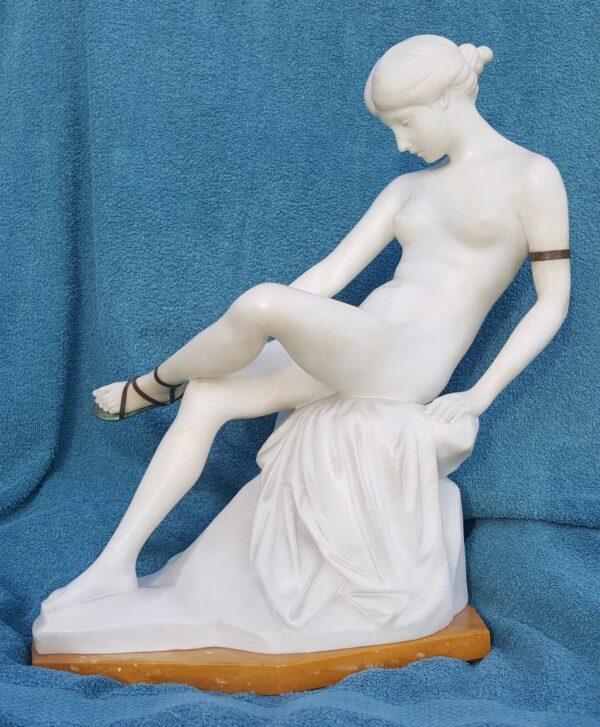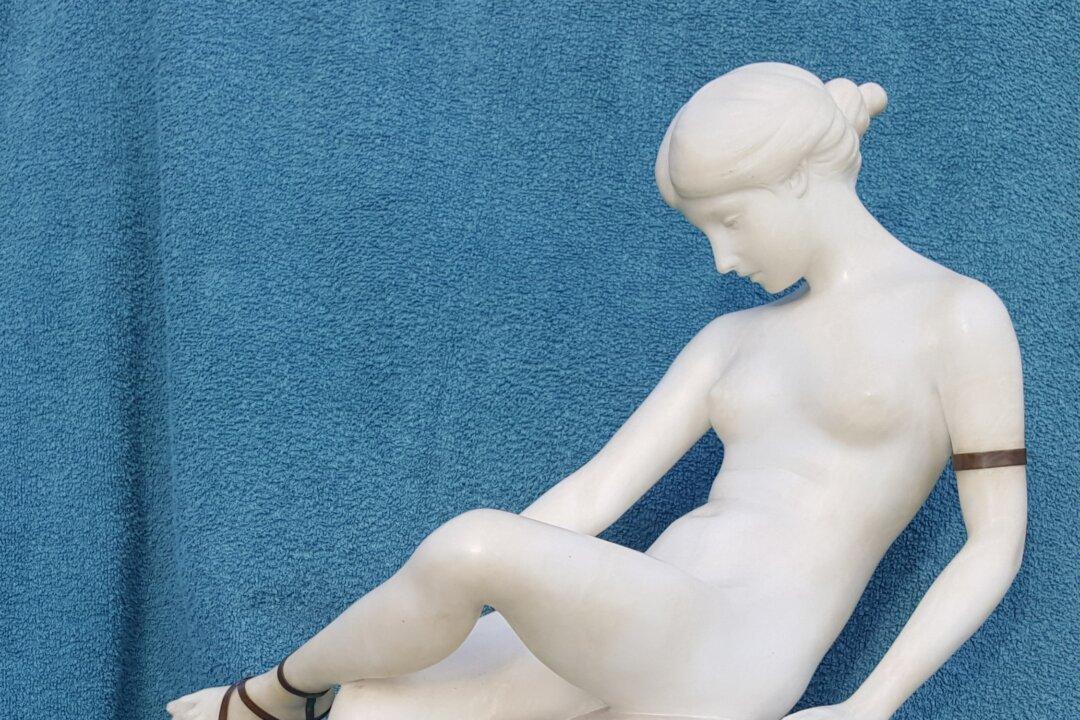
“Seated Maiden Lacing Her Sandal,” 1920, by Ernst Seger. Alabaster and bronze; 16.5 inches tall. Courtesy of Wayne A. Barnes
A young woman walks down a trail through the woods. She has been this way many times—as though it is her trail, her woods.


A young woman walks down a trail through the woods. She has been this way many times—as though it is her trail, her woods.